The Effects of Cold Temperatures on Bed Bug Control
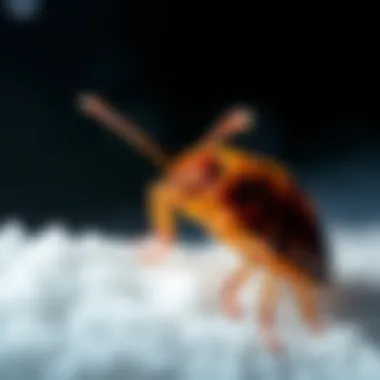
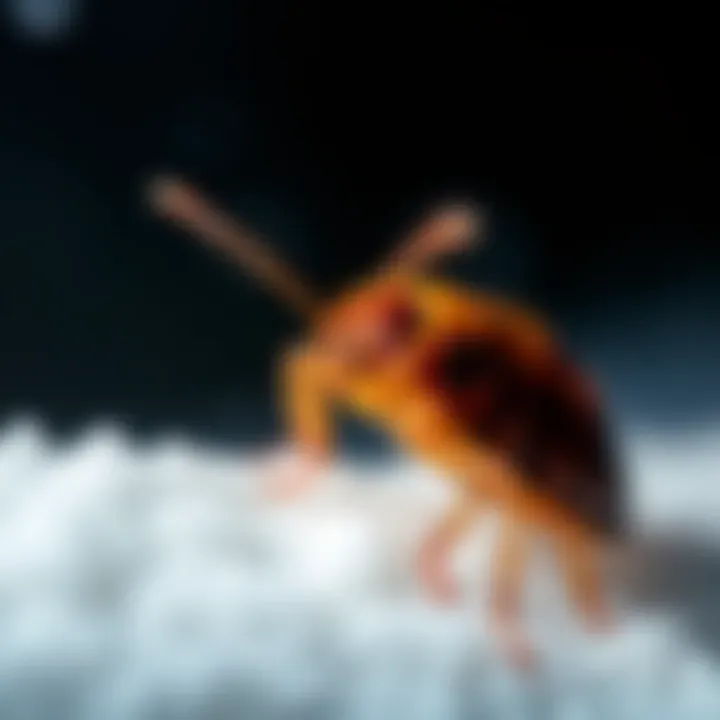
Intro
Dealing with bed bugs can feel like wrestling a shadow; much effort goes into managing them with little visible victory. These tiny pests, often mistaken for mere nuisances, can wreak havoc in a home setting. With increasing resistance to conventional pest control methods, it’s crucial to explore alternative strategies. One of those strategies is utilizing cold temperatures to combat bed bug populations. This investigation digs deeper into how chilling environments can be a potentially effective tool against these resilient foes.
Understanding the dynamics of bed bugs and their response to temperature variations is vital. To start, we must identify these pests and the signs they leave behind. Next, we’ll present practical prevention methods that homeowners can adopt before infestations take root. Lastly, we’ll explore DIY pest control solutions to manage bed bug populations using cold treatment effectively.
Bed bugs are formidable, but by harnessing the power of nature, we can turn the tide in our battle against them.
Understanding Bed Bugs
Understanding bed bugs is foundational for anyone seeking to effectively manage these tenacious pests. These insects thrive on human connections, often dodging detection until their populations burgeon. Therefore, grasping their biology, behavior, and life cycle will equip homeowners and pest control professionals with the tools needed to combat infestations effectively.
Biology and Behavior of Bed Bugs
Bed bugs, scientifically known as Cimex lectularius, are small, wingless insects that prefer a diet solely of blood, usually from humans. Their flattened bodies and ability to hide in tiny crevices make them challenging adversaries. Adult bed bugs can live up to a year without feeding, which adds to their resilience.
Unlike many pests, bed bugs are not nocturnal by nature; they gravitate towards warmer temperatures and human carbon dioxide emissions. This can lead them to emerge from their hiding spots – often in mattresses and bedding – during sleep. Interestingly, they do not transmit diseases; however, their bites can result in severe allergic reactions, anxiety, and considerable discomfort. Understanding their behavioral patterns allows homeowners to recognize signs of infestation, such as dark spots on bedding or tiny blood stains, leading to timely interventions.
Life Cycle and Habitats
The life cycle of bed bugs consists of several stages: egg, nymph, and adult. A female can lay anywhere from 200 to 500 eggs in her lifetime, and these eggs hatch in about a week. Nymphs undergo five molts before reaching maturity, and this process can be expedited with favorable environmental conditions.
Bed bugs are not picky about their habitats. While they prefer human environments, they can also be found in various warm spots:
- Cracks and crevices in walls
- Inside furniture, like couches
- Luggage and travel bags
- Within seams of mattresses and linens
This broad adaptability to habitats makes them ubiquitous in hotels, apartments, and even single-family homes.
"Awareness of bed bug habits is the first line of defense against infestations. Education on their biology and life cycle can guide effective pest control strategies."
In the face of cold temperatures, bed bugs may seek shelter deeper into their chosen environments, showing a fascinating adaptability to changing conditions. Understanding where they lay low during cooler months can inform strategies for effective cold treatments or pest management initiatives.
The Effects of Temperature on Insects
Understanding the role of temperature in the lives of insects is like peering through a lens that reveals often unseen connections in nature. Temperature influences everything from insect behavior to survival rates, impacting the delicate balance of ecosystems. When we consider bed bugs, the effects of temperature are particularly critical. Cold temperatures can halt the progress of these pesky pests and potentially lead to their demise if managed effectively.
This article will delve into how temperature directly affects insect physiology, especially focusing on bed bugs. We'll touch on specific elements such as thermal tolerance and the survivalist strategies insects adopt in response to their surrounding temperatures. Recognizing these dynamics can equip homeowners with knowledge, which in turn influences pest control methods, offering more effective ways to combat these resilient invaders.
Thermal Tolerance in Insects
In the insect world, thermal tolerance refers to the range of temperatures that an insect can survive and thrive in. Each species has unique adaptations to cope with temperature variances; some can withstand extreme cold, while others are more accustomed to heat. Bed bugs, for instance, are not particularly fond of chilly environments. Their thermal tolerance is tailored to a warm climate, making them susceptible when the mercury drops well below their comfort level.
Researchers have documented that bed bugs can start to experience adverse effects around 10 degrees Celsius, and their survival chances diminish at zero degrees Celsius or lower. Continuous exposure to such temperatures can result in cell damage and, ultimately, death. This vulnerability is critical when developing cold treatment strategies as it opens the door to effective pest control without resorting to harsh chemicals.
"When temperatures fall below the critical threshold, bed bugs lose their opportunity to reproduce, leading to a decline in their populations."
Temperature Regimes and Insect Survival
Temperature regimes—the patterns of temperature change within an environment—are pivotal in determining insect survival rates. Bed bugs, like many insects, respond to these changes in a variety of ways. In warmer conditions, they become more active and reproduce prolifically. However, when exposed to cold, their activity levels plummet along with their reproductive capability.
Cold spells can inhibit their movement and force them to utilize their energy reserves just to survive. The factors involved can also vary based on life stages; nymphs may have different survival rates compared to adults during cold exposure. This variable response must be considered when applying cold treatments in pest management strategies.
Here are a few key points about temperature regimes and bed bug survival:
- Metabolic Rate: As temperatures decline, so does the metabolic rate of bed bugs, slowing their overall movement and energy consumption.
- Survival Duration: Longer exposure times to cold increase mortality rates; thus, it is necessary to maintain subzero conditions for several hours.
- Reproductive Impact: Cold temperatures can disrupt mating cycles, drastically reducing the chances for population resurgence.
By grasping the nuances of these temperature responses, we can craft effective pest control methods while also enhancing our understanding of ecological balances and the adaptive strategies of these small but mighty insects.
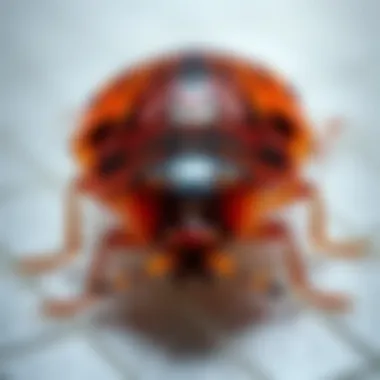
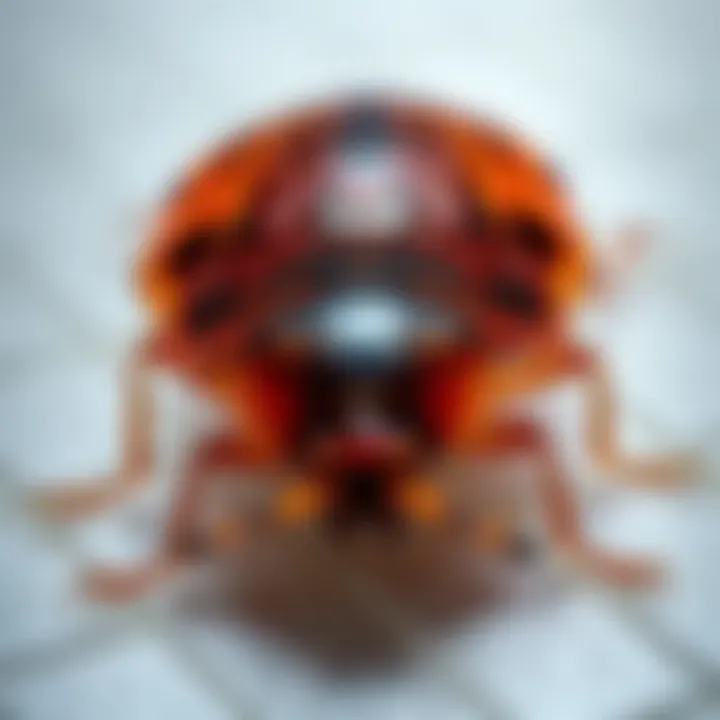
Cold Temperatures and Bed Bug Mortality
Cold temperatures serve as a significant factor in controlling bed bug populations. Understanding its impact is crucial for devising effective pest management strategies. In this section, we will explore how low temperatures affect bed bug mortality, the underlying scientific research, and practical implications for homeowners and pest control professionals alike.
Research Insights on Cold Treatment
Numerous studies have demonstrated that exposure to cold can lead to a decline in bed bug numbers. Research conducted by scientists at the University of Minnesota found that bed bugs can only survive temperatures below freezing for a limited time. Specifically, bed bugs exposed to temperatures of 0°F (-18°C) for a sustained duration tend to experience higher mortality rates.
A major insight from this research highlights the importance of both temperature and time in effectively employing cold treatments. For instance, bed bugs subjected to moderate cold for an extended period may withstand the chill longer than those in extreme conditions but for shorter durations. This brings us to the nitty-gritty of how homeowners can implement effective cold treatments.
Additionally, certain experimental conditions revealed that adult bed bugs are more vulnerable to cold than their eggs. This finding brings forth a crucial consideration; even if adults are eliminated, if the eggs persist, reinfestation may occur. Variability in results from different studies calls for careful application of cold treatment methods to ensure a comprehensive approach to pest management.
"Understanding how low temperatures can be used as a tool in pest control is essential for effective management of bed bugs."
Critical Freezing Points for Bed Bugs
Identifying the critical freezing points for bed bugs is essential for anyone looking to employ cold treatment effectively. Research indicates that bed bugs can endure lower temperatures to a certain extent, but prolonged exposure to temperatures below 32°F (0°C) can be deadly.
It's documented that bed bugs begin to succumb to freezing temperatures after a few hours, making a chilling environment detrimental to their survival. However, the rate at which mortality occurs varies significantly among life stages: nymphs and adults generally have different levels of tolerance to extreme cold.
Key Freezing Points:
- 32°F (0°C): Begins to show adverse effects; prolonged exposure can lead to mortality.
- 0°F (-18°C): Proven to be one of the most effective temperatures for achieving high mortality rates.
- -10°F (-23°C): Bed bugs exhibit extreme vulnerability and nearly total mortality if exposed long enough.
Understanding these critical freezing points allows homeowners to tailor their cold treatment methods, ensuring that all stages of bed bugs—adults, nymphs, and eggs—are effectively targeted. In sum, low temperatures present a viable alternative for pest control, especially when chemical solutions may fall short or when dealing with resistant populations.
Effective Cold Extermination Methods
The battle against bed bugs can be daunting. Among various eradication strategies, effective cold extermination methods provide notable advantages, especially for those keen on avoiding chemical treatments. This section dives into the significance of cold extermination techniques and how they can aid in managing pesky bed bug populations.
Freezing Methodologies
Cold temperatures can serve as a reliable weapon against bed bugs, effectively lowering their survival odds. Various freezing methodologies have emerged, each with its unique approach to applying subzero conditions. The key is ensuring that the freezing process is sustained for a duration long enough to ensure all life stages of bed bugs are adversely affected.
- Localized Freezing: This method involves applying extreme cold directly to infested items, such as mattresses, bed frames, or clothing. Consumers often use specialized products, like portable freezers or cold sprays, achieving temperatures below -20°F (-29°C). The general consensus is that keeping items at this temperature for at least four days guarantees the demise of most bed bugs.
- Whole Room Freezing: For larger infestations, whole-room freezing may be necessary. This method usually requires professional help, as it entails cooling down entire rooms using industrial-grade equipment. It’s crucial to ensure that every nook and cranny reaches lethal temperatures, which might involve prolonged treatment times and careful preparation to avoid damages.
- Liquid Nitrogen Application: This advanced technique uses liquid nitrogen to freeze bed bugs almost instantly. It's especially effective for targeting hard-to-reach crevices and joints within furniture. However, it’s important for users to keep safety guidelines in mind, as working with pressurized gases poses various risks.
Achieving success with these freezing methodologies requires precision and planning. Not only must the right temperature be reached, but the infested items or spaces should remain at those temperatures long enough to ensure complete extermination.
Addressing Fortified Areas and Egg Viability
While adult bed bugs are vulnerable to extreme cold, their eggs present a unique challenge. Bed bug eggs are often sheltered in hard-to-reach areas, such as seams in mattresses or cracks in furniture. Understanding how to effectively address these fortified areas is pivotal for comprehensive extermination.
Bed bugs reproduce quickly, and their eggs are somewhat resilient, typically needing to be exposed to sustained cold for a specific period. Here’s a closer look at some strategies to combat these resilient pests:
- Vacuuming First: Prior to applying cold treatments, vacuuming can eliminate many adult bed bugs and eggs, minimizing their population and making cold treatment more effective post-cleaning.
- Targeted Freezing: Focus on key habitats of bed bug eggs by using localized freezing methods, ensuring these areas are treated for a longer duration than the general freezing of infested items. Cold applications should last at least two weeks to ensure success against stubborn eggs.
- Sealing Cracks and Crevices: Before initiating cold treatments, sealing potential hiding spots can greatly reduce egg survival chances. By limiting access to areas where bed bugs may lay their eggs, overall effectiveness increases.
In summary, cold extermination methods, particularly freezing methodologies, can greatly aid in combatting bed bug infestations. However, attention must be paid to their ability to survive in fortified areas and their eggs' resilience. As always, combining methods, such as freezing followed by thorough cleaning, increases chances for effective control of these unwelcome home invaders.
"Understanding the lifecycle of bed bugs and their survival tactics is key to effectively utilizing cold extermination methods."
Utilizing cold treatments not only showcases a non-chemical approach to pest management, it also opens doors to innovative and resourceful solutions for homeowners dealing with persistent infestations.
Implementing Cold Treatment in Pest Control
Cold treatment is becoming an increasingly viable method for controlling bed bug populations, especially as resistance to traditional pesticides becomes a growing concern. This section delves into the key elements that make it essential in pest management strategies. The burgeoning interest in utilizing cold as a method for pest control reflects a shift toward more sustainable practices that homeowners can adopt. Individuals aware of the benefits and processes associated with cold treatment can implement it more effectively, thereby reducing reliance on chemicals for pest management.
Cold Treatment Protocols
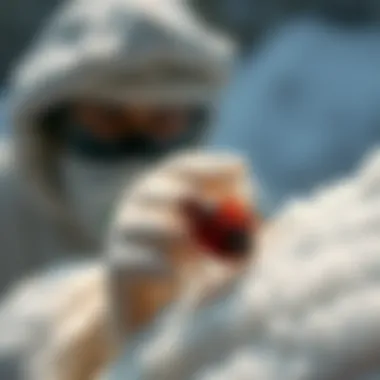

To execute cold treatment successfully, a methodical approach is critical. The process often begins with identifying and isolating infested items such as bedding, clothes, and furniture. Once identified, the following steps should be considered:
- Preparation: Items should be bagged and sealed to prevent bed bugs from escaping.
- Freezing Conditions: For effective killing of bed bugs, temperatures must drop below -17 degrees Celsius (1 degree Fahrenheit). Ensure items remain at this temperature for a minimum of four days, as bed bug eggs and adults may withstand brief periods of cold.
- Monitoring: It can be beneficial to use a thermometer to constantly check the temperature of the items during the treatment process. Proper instruments can help in maintaining consistent cold conditions.
These protocols help ensure that the cold treatment is not just an afterthought, but a deliberate, effective strategy that targets various stages of the bed bug life cycle.
Safety and Efficacy of Cold Applications
When discussing the safety and efficacy of cold applications, it’s important to weigh the advantages against potential pitfalls. Cold treatment is generally considered safe, especially for households where chemical applications can pose health risks to children and pets. Unlike toxic pesticides that may leave residues, cold treatment minimizes exposure to harmful substances.
However, a few considerations should be kept in mind:
- Material Sensitivity: Some materials, especially those that contain or are made from certain natural fibers, can be adversely affected by extreme cold. Understanding the materials will help in determining suitability for freezing.
- Thoroughness of Treatment: Areas that are inadequately treated have the potential to become new breeding grounds. The success of cold applications hinges on ensuring that all items have reached the required temperatures.
In summary, if conducted correctly, cold treatment serves not only as an efficient pest control method but also as a safe avenue for households looking to navigate the nuisance of bed bugs without resorting to chemicals.
Advantages of Cold Treatment
Cold treatment offers a host of advantages when it comes to managing bed bug populations, making it an appealing option for homeowners and pest control specialists alike. One of the compelling elements of this method is that it provides a non-chemical approach to pest management. This is crucial, particularly for families or individuals who prefer to avoid toxic substances in their living spaces. Low temperatures effectively incapacitate bed bugs without any adverse effects on humans or pets, which is a significant concern for those wanting to maintain a safe environment at home.
Moreover, with the rise of bed bug populations resistant to chemical treatments, employing cold as a tactic brings a fresh perspective to this age-old problem. Let's delve into the specific elements of this method and its benefits.
Non-Chemical Approach
The advantage of a non-chemical approach cannot be overstated. Chemicals often come with various risks including exposure to harmful substances and potential health risks. Cold treatment, on the other hand, requires nothing more than the natural forces of nature—mainly, temperatures that are below freezing.
- Environmental safety: Homeowners can employ freezing techniques without worries over chemical residues affecting air quality or remaining on surfaces.
- Health benefits: It minimizes the risk of allergic reactions often linked with certain pest control chemicals. Particularly, those with asthma or respiratory issues can breathe a little easier knowing their homes are treated without harsh substances.
- User-friendly: This method appeals to individuals who value straightforward, low-maintenance solutions that don’t involve intricate applications or equipment. One can set up a freezing chamber or simply leave infested items in a cold environment for an appropriate duration.
Cold treatment is also versatile; it can be applied to various items, including bedding, clothing, and even furniture, ensuring that all possible hiding spots for bed bugs are covered.
Targeting Resistant Populations
The problem of resistant populations is becoming more pronounced in modern pest management. Bed bugs have developed resistance to many commonly used pesticides, leading to frustrating and often ineffective treatment efforts. Cold temperatures present a solution that bypasses this resistance altogether.
- Effectiveness observed: Numerous studies have shown that bed bugs cannot withstand extreme cold. Their physiological makeup lacks the resilience needed to survive freezing temperatures that typically fall below -18°C (0°F). Regardless of any resistance to particular chemicals, the cold is the great equalizer, capable of wiping out these pests in both their adult and embryonic forms.
- Less regrowth: Acting quickly with cold treatment can prevent the resurgence of bed bugs since the larvae as well as adults are impacted. This ultimately cuts down on the number of potential infestations from any eggs that may survive chemical treatments.
Adopting a cold treatment methodology could be likened to wielding a double-edged sword. On one side, it provides an efficient, eco-friendly method; on the other hand, it also poses a strategic advantage against pests that have learned to evade traditional chemical approaches. As more people become aware of their options, cold treatment emerges as a viable solution in the fight against bed bugs.
Cold treatment not only serves as an effective extermination method but also paves the way for an important shift in pest control strategies, allowing homeowners to combat resistant bed bug populations effectively.
Limitations and Challenges
Understanding the limitations and challenges associated with cold treatments for bed bugs is paramount for those dealing with these persistent pests. As effective as cold treatment can be, it is not a silver bullet and brings certain constraints that would need careful consideration. While low temperatures can kill bed bugs at various life stages, other multifaceted factors come into play when applying this method. This section explores the challenges that pest control professionals and homeowners might face in effectively implementing cold treatment methods.
Cold Treatment Limitations
The efficacy of cold treatment, no matter how appealing, doesn't come without its own set of limitations. Here’s a deeper look into some critical points:
- Time Consistency: Bed bugs don’t usually die immediately when exposed to cold. The freezing process can take time, sometimes needing more than just a few hours. Failing to maintain the right temperature for a sufficient duration can lead to incomplete extermination.
- Temperature Thresholds: While temperatures below -17.8 degrees Celsius (0 degrees Fahrenheit) can typically kill bed bugs, varying environmental conditions can affect this outcome. If colder zones are not reached uniformly, some bugs might easily survive.
- Varied Species Resistance: Like most pests, some bed bug populations may have developed resistance to cold. Localized genetic differences might lead to certain strains that withstand freezing temperatures better than others. This complicates blanket treatment strategies.
- Limited Accessibility: Not every area can be easily cooled to the necessary temperatures. Furniture, walls, and bedding can act as insulators, making it difficult for cold air to penetrate all areas where bed bugs might hide.
Additionally, the responsibility of executing effective cold treatments often discourages many householders. This could lead to reliance on chemical treatments which may not be optimal in the long haul. Thus, while cold treatment is a powerful tool in the pest control arsenal, it does face limitations that must not be overlooked.
Addressing Practical Challenges
Confronting practical challenges in cold treatments obliges a strategic approach. Here are ways to tackle these restrictions effectively:
- Optimize Treatment Duration: Homeowners and pest control services need to monitor and maintain the cold treatment's duration closely. It is beneficial to have a calibrated thermometer that keeps tabs on the temperature fluctuations within the treated area. Insuring that the specified freezing period is honored will maximize chances of success.
- Preparation and Segregation: Before commencing a cold treatment, determining which items are feasible for freezing requires thorough preparation. Bedding, clothing, and small furniture can typically be moved into a freezer, but larger items may necessitate an alternative strategy like containerized cryotherapy.
- Increase Equipment Range: Employing specialized cold treatment tools can help tackle limitations effectively. Portable cold treatment units can be adapted to fit into spaces where conventional freezing methods would falter. These devices can generate colder air that meets the required thresholds over more complex shapes and sizes.
- Educate and Inform: Providing education about cold treatment among homeowners will enhance the collaborative efforts with pest control professionals. Understanding the ins-and-outs of the process ensures better preparedness and expectations.
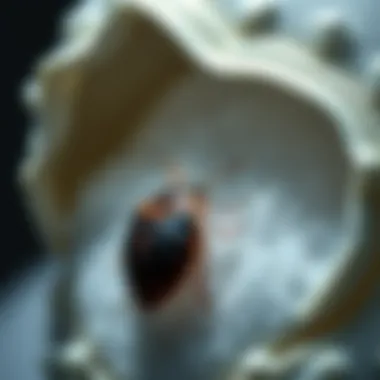
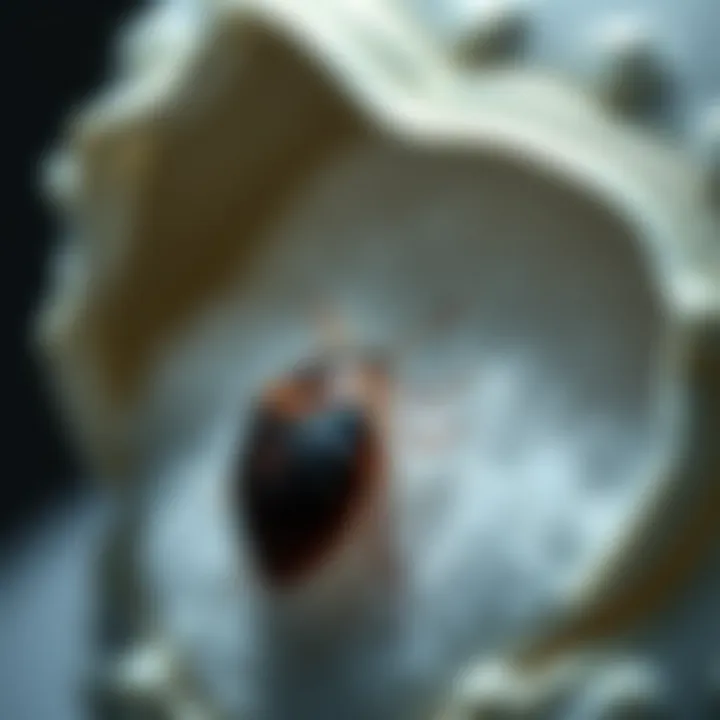
"Cold may offer a solution to bed bug infestations, but one must stay persistent and strategic to make it work effectively."
Understanding these limitations and challenges will help ensure a comprehensive strategy for battling bed bug populations. By recognizing both the benefits and drawbacks of cold treatment, individuals can better navigate the diverse landscape of pest management strategies.
Comparative Analysis with Other Treatment Methods
Understanding how cold temperatures impact bed bug populations offers a different perspective on pest control strategies. This section highlights the importance of comparative analysis in assessing the effectiveness of various treatments against these persistent pests. By examining different methodologies, including chemical options and integrated pest management, we can glean insights on which strategies offer the most promise for homeowners.
Chemical Treatments vs. Cold Treatments
When weighing the options for bed bug treatment, one cannot overlook chemical treatments. Traditionally, insecticides have been the go-to solution, often providing quick extermination. However, they come with their own set of challenges, including potential health risks to humans and pets, environmental effects, and growing resistance among bed bug populations.
In contrast, cold treatments present a non-chemical alternative. The crux of cold treatment effectiveness lies in its ability to target eggs and adults alike. Studies have shown that exposing bed bugs to temperatures below 0°C (32°F) for a duration can significantly reduce their population. This method is not only safer but also less reliant on synthetic chemicals, which can cause issues in households with small children or allergies.
"Cold treatments provide an effective alternative, often yielding long-term results without the fallout of chemical exposure."
However, it's crucial to note the limitations of each approach. Chemical solutions might target infestations quickly, yet the residual toxicity can linger, raising concerns about future exposure. Cold treatments can be labor-intensive, needing careful consideration of where bed bugs might hide and how long each marked area is exposed to cold.
Integrated Pest Management Approaches
Integrated Pest Management, or IPM, offers a comprehensive strategy that blends both chemical and physical treatment methods. The concept revolves around understanding the life cycle and behavior of bed bugs to formulate effective control measures.
In the context of cold temperature applications, IPM can be especially beneficial. It encourages practitioners to implement cold treatment as a key part of their management plan, all while monitoring the infestation levels regularly. For example, after applying cold treatment, homeowners can assess the effectiveness by checking for signs of bed bug activity. Regular monitoring can reveal whether additional measures may be necessary, such as returning to chemical treatments if cold methods fall short.
Utilizing IPM methods creates a multifaceted approach to pest control. By integrating knowledge of bed bug biology with cold treatments and chemical alternatives, homeowners can make more informed decisions. Not only does this enhance overall efficacy, but it also aids in staving off further resistance development and ensures a more sustainable approach to bed bug management.
In summary, the comparative analysis between cold treatments and other methods underscores not just the operational efficacy but also offers a balanced view of benefits and challenges. Whether homeowners lean towards cold treatments or traditional chemical methods, understanding all options equips them to better combat bed bug populations.
Case Studies: Successful Cold Treatments
Understanding how cold treatments have been implemented effectively in real-world situations can provide invaluable insights for anyone grappling with bed bug infestations. Case studies serve as a window into practical applications, shedding light on challenges faced and solutions found. By examining these situations, homeowners and pest control professionals can grasp the theory behind cold treatments in a tangible way, moving toward practical implementation with confidence.
Real-World Applications
- Residential Case Study in Chicago: A family faced a stubborn bed bug infestation in their apartment. Traditional treatments yielded minimal results. The pest control team decided to use a combination of freezing and cryonite treatments. They sealed the affected items in bags and placed them in a walk-in freezer for a minimum of 72 hours. Post-treatment inspections revealed no signs of bed bugs, leading to increased satisfaction and reduced stress for the family.
- A Boutique Hotel in New York: Faced with negative reviews over bed bugs, the management sought a discreet solution. They employed cold treatment methods alongside integrated pest management approaches. By utilizing portable freezing units, they treated individual rooms effectively without disrupting guests. The hotel saw an increase in positive feedback and return visits soon after the treatment.
These instances show that cold treatments can be effectively tailored to specific environments and circumstances, helping both residential and commercial property owners tackle bed bug problems head-on while maintaining their quality of life or business operations.
Lessons Learned from Implementations
From these successful case studies, several key lessons emerge:
- Preparation is Key: Homeowners must prepare adequately before treatments. This includes emptying closets, washing linens, and sealing items to ensure that all potential hiding places for bed bugs are addressed.
- Time Matters: Cold treatments often require prolonged exposure to temperatures below freezing. Rushing this process can result in ineffective treatments, allowing bed bugs to survive.
- Equipment Quality: Invest in high-quality freezing equipment or hire professionals who use well-maintained tools to ensure temperatures reach and maintain effectiveness throughout the treatment.
- Follow-Up Is Essential: After cold treatment, following up with another inspection is crucial. This ensures that any overlooked infestations are caught early, avoiding future problems.
- Combination with Other Techniques: As demonstrated in the hotel case study, combining cold treatments with other pest management strategies can yield better results, adapting to the unique needs of each situation.
"Through real-world applications of cold treatments, valuable lessons emerge, guiding future efforts in pest management."
Ending: The Role of Cold in Bed Bug Management
The use of cold in managing bed bug populations is gradually gaining traction among pest control professionals and homeowners alike. As discussed throughout this article, cold treatments offer unique advantages in the fight against bed bugs. They represent a non-chemical approach, which can be particularly appealing in settings where chemical resistance in pests is a growing concern. Moreover, understanding how low temperatures affect the biology and behavior of bed bugs equips individuals with the knowledge they need to combat infestations effectively.
Evaluating Efficacy
When considering the efficacy of cold treatments, various factors come into play. The specific temperatures required to reach bed bug mortality are crucial, alongside the duration of exposure needed to ensure successful outcomes. Research indicates that temperatures below zero degrees Celsius can eradicate both bed bugs and their eggs. However, practical implementation can be a different matter. For homeowners attempting to freeze infested items, maintaining a consistent temperature for a minimum of four days is recommended to improve the likelihood of total elimination.
It's important to weigh the benefits against the challenges of this method. For instance, some may encounter issues with insulation in heated environments, making it tougher to achieve effective cold treatment. Yet, an appropriate assessment of the infested areas can lead to strategic decisions about which belongings to treat and which to discard, enhancing overall management effectiveness.
Future Directions in Bed Bug Control
As pest management practices evolve, so too will the application of cold treatments. Future research could explore innovative freezing methods, perhaps integrating advanced technology to optimize effectiveness while ensuring safety. Continuous monitoring of temperature tolerance and developing more efficient freezing devices could make this method more accessible for wider use.
Furthermore, educating homeowners about these non-chemical solutions is vital. Collaboration between pest control experts and the public can lead to improved strategies, reducing reliance on harsher chemicals that may pose environmental and health risks. Resources like the Centers for Disease Control and Prevention (CDC) can provide valuable information and guidelines on effective pest management practices.
Ultimately, the road ahead for bed bug management is likely to be more integrated, combining cold treatments with other methods, fortifying defenses against these resilient pests. With careful consideration and strategy, cold therapies, when effectively harnessed, can serve as a powerful tool in the pest management arsenal.















